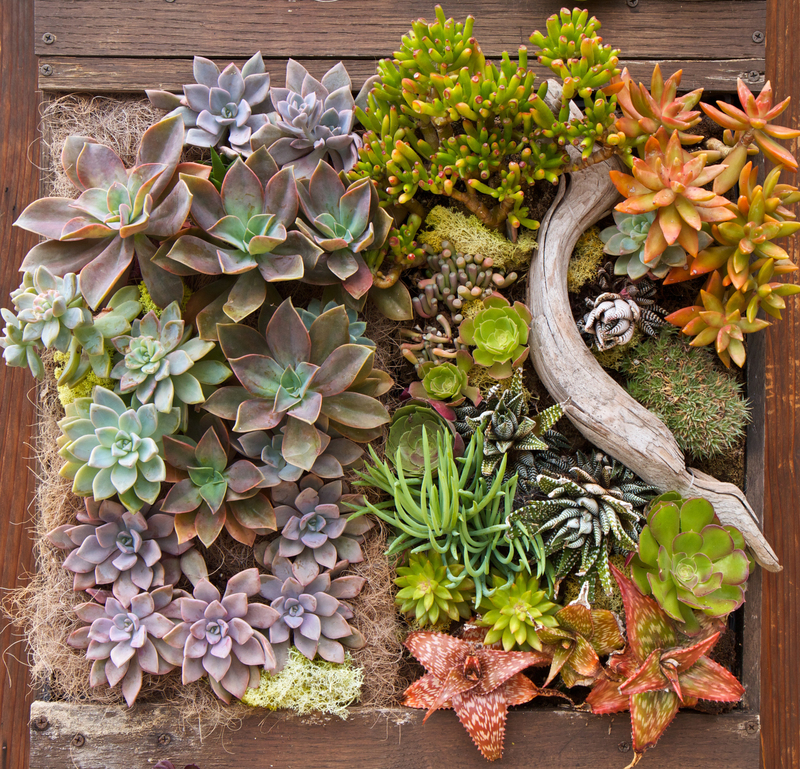UK's Top 10 Edible Wild Plants and Flowers
Posted on 24/06/2025
UK's Top 10 Edible Wild Plants and Flowers
UK's Top 10 Edible Wild Plants and Flowers
Foraging for wild plants and flowers can be a delightful and nutritious way to enhance your meals. The UK is home to a diverse range of edible wild plants and flowers that can add a unique flavor and nutritional boost to your diet. This guide covers the top 10 edible wild plants and flowers you can find across the UK, along with tips on foraging safely and responsibly.
1. Wild Garlic (Allium ursinum)
Wild Garlic, also known as Ramsons, is a common sight in the UK's woodlands during spring. Its broad, green leaves and star-shaped white flowers are easy to identify. Wild Garlic has a mild garlic flavor that pairs well with various dishes.

2. Common Nettle (Urtica dioica)
Despite its sting, the Common Nettle is a nutritional powerhouse. High in vitamins A, C, K, and several B vitamins, nettles are also rich in iron, calcium, and magnesium. Cooking or drying removes the sting and makes them safe to eat.
3. Dandelion (Taraxacum officinale)
Dandelions are fully edible: leaves, flowers, and roots. Rich in vitamins and minerals, dandelion leaves can be used in salads, while the yellow flowers add color to various dishes. The roots can be roasted and used as a coffee substitute.
4. Elderflower (Sambucus nigra)
Elderflower blooms in early summer and is known for its fragrant white flowers. They can be used to make elderflower cordial, teas, and even wines. The flowers have been used traditionally for their medicinal properties as well.
5. Hawthorn (Crataegus monogyna)
Hawthorn trees offer edible berries, flowers, and leaves. The young leaves can be added to salads, the flowers are often used in making jellies and wines, and the berries are rich in antioxidants.
6. Chickweed (Stellaria media)
Found year-round, Chickweed has a mild flavor that makes it a perfect addition to salads and sandwiches. It's rich in vitamins C, B6, iron, and calcium. Historically, it has also been used for its medicinal properties.
7. Wood Sorrel (Oxalis acetosella)
Wood Sorrel is recognized by its heart-shaped leaves and delicate white flowers. It has a tart, lemony taste, making it a flavorful addition to salads and soups. However, it contains oxalic acid and should be consumed in moderation.
8. Wild Strawberries (Fragaria vesca)
These tiny berries are a delightful find in the summer months. Smaller than cultivated strawberries, they pack an intense flavor. The leaves can also be used to brew a medicinal tea.
9. Sheep's Sorrel (Rumex acetosella)
Known for its arrow-shaped leaves, Sheep's Sorrel has a tangy flavor that complements salads and soups. It grows abundantly in grasslands and meadows. Like Wood Sorrel, it contains oxalic acid and should be consumed moderately.
10. Wild Rose (Rosa spp.)
Wild Rose bushes offer beautiful pink flowers and bright red rose hips. The petals can be used to make syrups, jellies, and desserts, while the rose hips are rich in Vitamin C and can be made into teas, jams, and jellies.
Pros of Foraging Edible Wild Plants and Flowers
- Access to fresh, organic, and nutritious food.
- Cost-saving on groceries.
- Promotes a connection with nature and outdoor activity.
- Encourages biodiversity and environmental awareness.
Cons of Foraging Edible Wild Plants and Flowers
- Potential for misidentification and poisoning.
- Legal restrictions in some areas.
- Impact on local flora if done irresponsibly.
- Seasonal availability and limited quantity.
Tips for Safe Foraging
- Always use a reliable field guide or app for identification.
- Only forage in areas you have permission to access.
- Be 100% sure of the plant's identity before consuming it.
- Harvest sustainably, taking only what you need and leaving some for wildlife.
- Avoid foraging near roads or where pesticides may have been sprayed.

Takeaways
- Foraging can provide nutritious, tasty, and free food options.
- There are both benefits and potential risks to foraging wild plants and flowers.
- Responsible foraging requires proper identification and sustainable practices.
Conclusion
Foraging for wild plants and flowers in the UK can be a rewarding and enriching experience. With the right knowledge and precautions, you can enjoy a variety of nutritious and delicious edibles straight from nature. Always forage responsibly and be mindful of the potential dangers. Enjoy the bounty that the UK's natural landscape has to offer!



